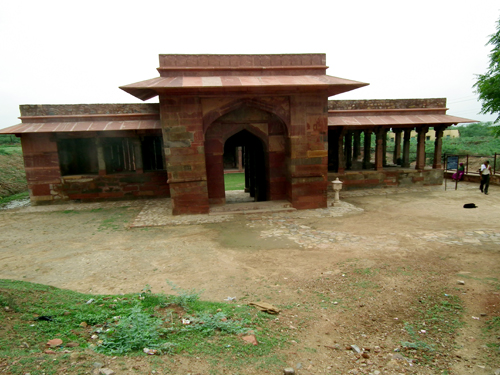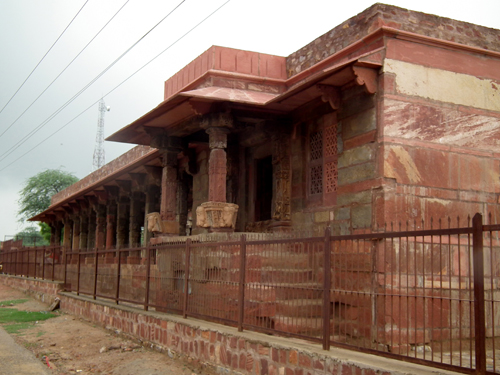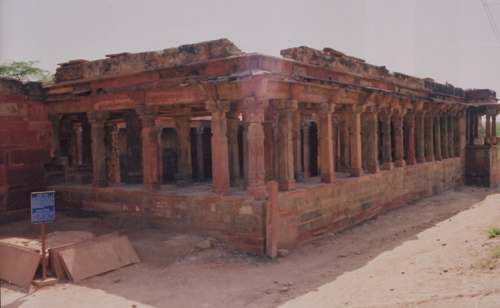Kaman was ruled by the Surasena rulers under whose patronage both Brahmanism and Jainism prospered at Kaman. The old mosque, now known as Chausath Khambha was built from the material of the Hindu temples. There are bas-reliefs here of the Navagrahas, the incarnations of Vishnu and the wedding of Siva-Parvati, the last being of high artistic quality. The figures of Kali, Ganesa, Vishnu and Narasimha are found sculptured on the pillars of this mosque. Three rows of eight such pillars form three aisles. All the pillars are square, and the lower half of many of them is quite plain. Around the entrance doorway of the quadrangle, there is an Arabic inscription in large letters. All the roofs are flat, except a small compartment in front of the mihrab, which has a dome formed in the usual trabeate system. From the style of the carvings on the pillars, it appears that these belonged to the Saiva and the Vaishnava temples. This is also confirmed by a pillar on which are inscribed the words “namah Sivaya”. The temple is datable to circa eighth century A.D.





 By Air : Agra
By Air : Agra By Bus : Mathura
By Bus : Mathura By Train : Kaman
By Train : Kaman